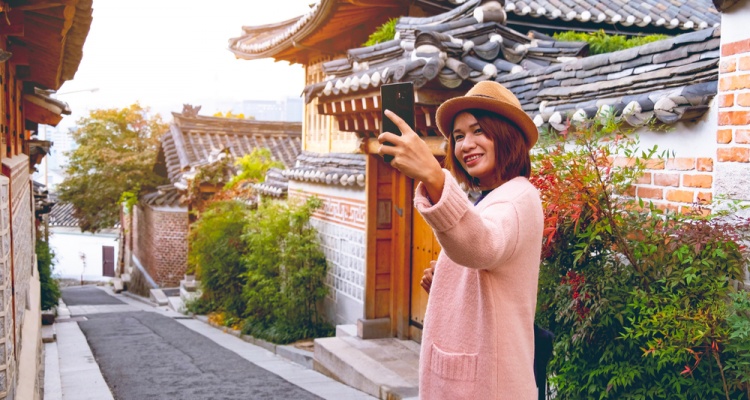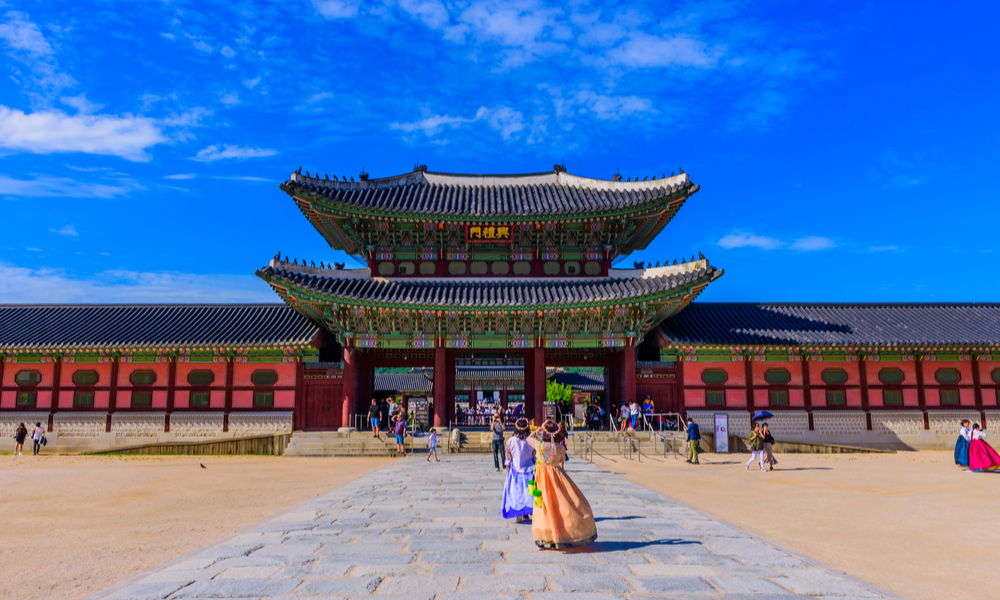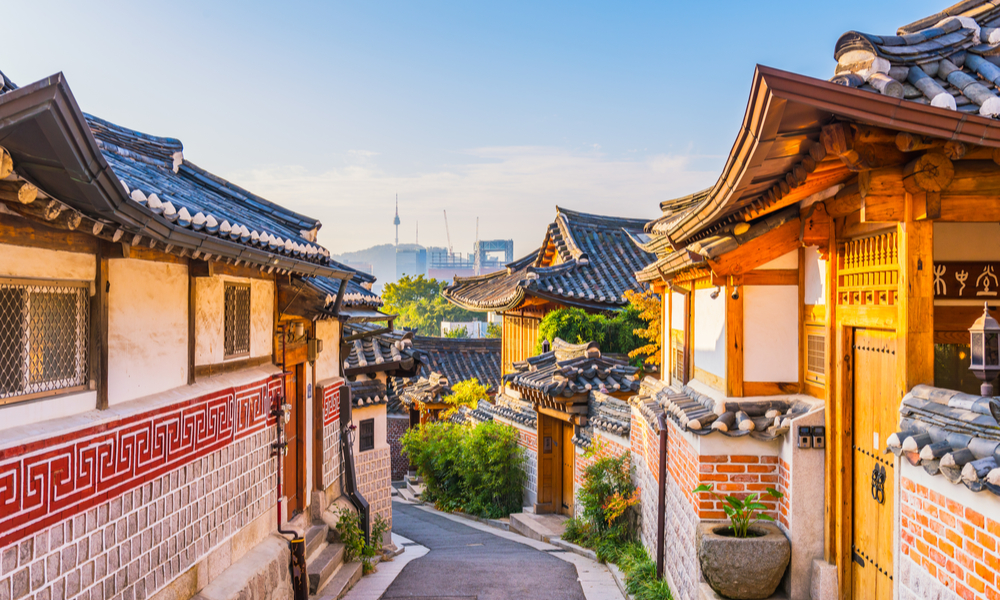There are few cities other than Seoul that are just perfect for taking selfies. A 2,000-year-old metropolis that’s bigger than London or Paris AND home to about half the population of South Korea, the city has a plethora of opportunities for taking pictures of yourself to wow your social media followers. It’s filled with history, futurism, exotic food, and captivating art. Here’s a guide to the best selfie spots in Seoul.
Gyeongbokgung Palace
The largest, and considered by many to be the most beautiful, of the five palaces in Seoul, Gyeongbokgung Palace was built by the Jeon Dynasty in 1395. Over the centuries, it was repeatedly destroyed and rebuilt and stands today as a breathtaking preservation of ancient Korean architecture. It’s also one of the most popular tourist sites in the country and is a must-see for any trip to Seoul. You’ll find it in the northernmost section of the city. Admission costs 3,000 won (about $3) and includes entrance to the National Palace Museum and the National Folk Museum. But the main draw for guests is to walk through the palace grounds and explore the many restored buildings that feature sloped and tiled roofs, colorful and ornate carvings, and recreated royal living quarters, as well as lotus ponds and gardens. If the regal atmosphere is your preferred self-portrait background, you might want to check out one or all of the city’s other palaces: Changdeokgung, Deoksugung, Changgyeonggung, and Gyeonghuigung.
Bukchon Hanok Village
Within walking distance of Gyeongbokgung Palace, Bukchon Hanok Village is an area of the city that’s preserved just as it was 600 years ago. The neighborhood features hundreds of the traditional wooden house (called hanock), many of which have been turned into artisan workshops, teahouses/restaurants, and cultural centers, all packed into a web of hilly lanes and twisted alleys. It’s a great place to spend an afternoon wandering around and learning about traditional Korean culture…and taking pictures, of course!
[maxbutton id=”15″]
Yongma Land Abandoned Amusement Park
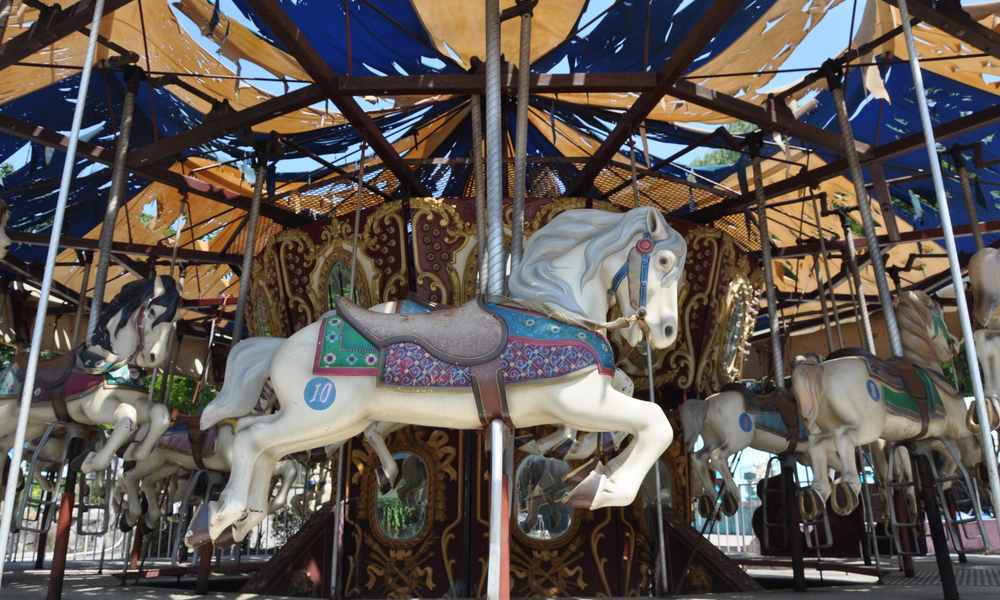
For visitors looking for more unique tourist experiences in Seoul, Yongma Land is a must. The original family-friendly theme park opened in 1980 and then closed due to failing business in 2011. That’s when Yongma Land began its new life as an “abandoned” theme park, even though it’s still owned and operated. The current owner is leaving the rides and attractions to fall apart and charging visitors to come and explore the decaying park. You’ll find the park in the northeastern Jungnang District, closest to the Mangu subway station. Admission is about 5,000 to 10,000 won ($5 – $10) and you may need to call a phone number on a sign at the entrance for someone to come let you in, but it’s worth it for the eerie experience of being in a dilapidated amusement park in the middle of one of the most densely packed urban areas in the world, and of course, the unique pictures that come with it.
Conversely, if you want to go to a fully operational amusement park, you might want to check out Lotte World, a massive, modern amusement complex in the southern part of the city. Its features include the world’s largest indoor theme park, an outdoor amusement park on an artificial island, a monorail, shopping malls, and more!
Trickeye Museum
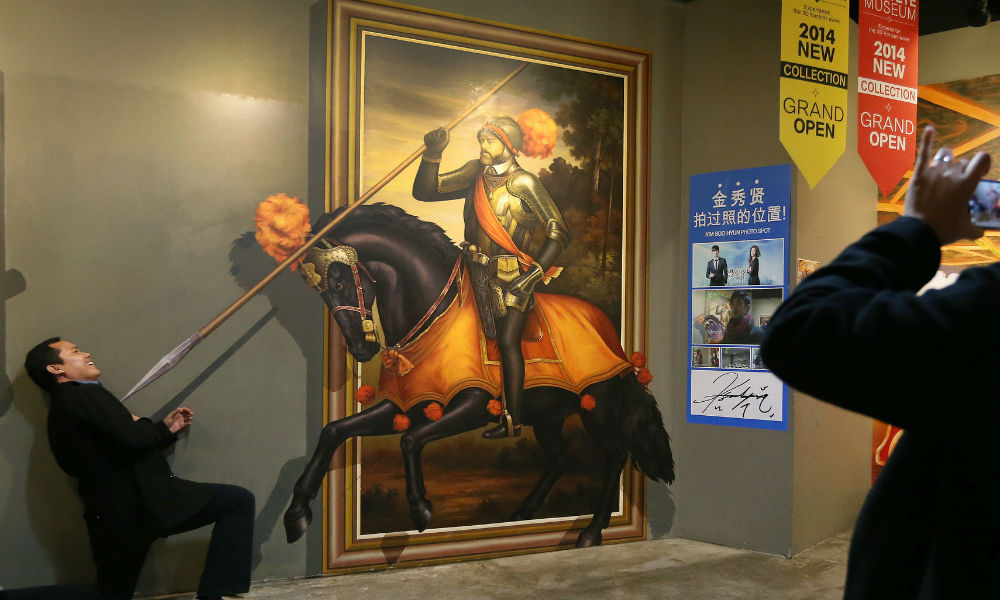
Image via Flickr – CC BY-SA 2.0 – Republic of Korea
If there’s one destination in all of Seoul that’s entire purpose is to help tourists create insane pics to share with their friends and family back home, it’s the Trickeye Museum. Started in 2010, Trickeye is now a franchise throughout Asia, but the one in Seoul’s Hongdae district is the original. The exhibits use both augmented reality (interactive CGI imagery and animation) via a smartphone app and traditional two-dimensional artwork (in the style known as trompe l’oei) to create fantastical images that appear three-dimensional. Admission is 15,000 won (about $13.50), although it’s less if you go in a group, which is ideal since it’s best to go with friends so you can take pictures of each other.
Gwangjang Market
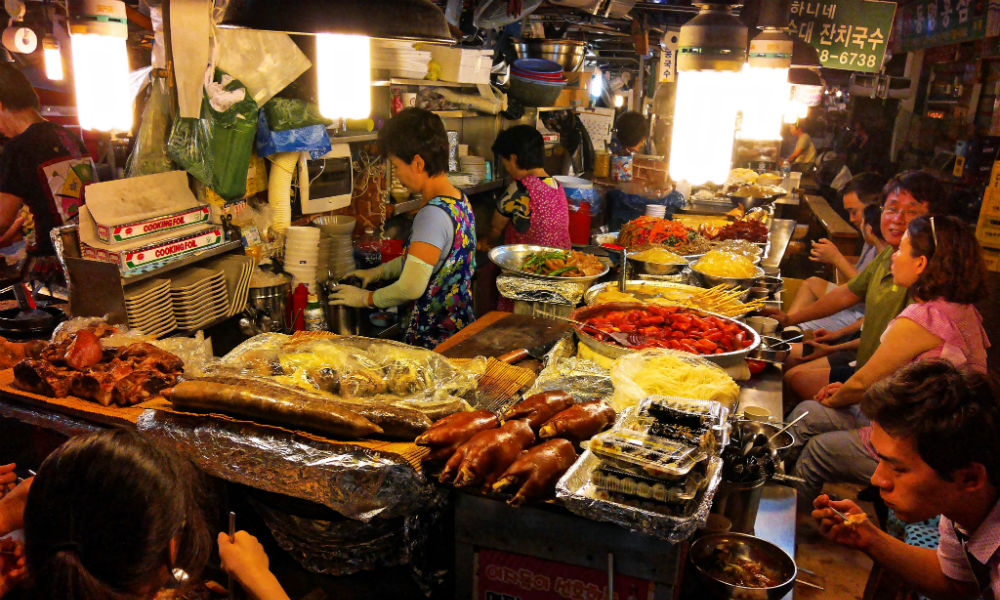
Image via Flickr – CC BY-SA 2.0 – tongeron91
One of the oldest markets in Korea, Gwangjang Market is one of those rare places that’s so authentic that it attracts both tourists and locals alike. Part of the famed Dongdaemun shopping district, Gwangjang is a 450,000 square feet space that’s packed with thousands of shops and sellers hawking everything from clothing to textiles and kitchen goods to traditional herbal medicine, but the market is most famous for its food vendors. Visitors can wander through the bustling stalls, buying fresh produce or squeezing in for a meal. The food selections vary. You’ll find Korean favorites like rice rolls (kimbap) or mung bean pancakes (bindae-tteok) along with more obscure dishes, but no matter what’s served it’ll be an amazing experience and cool photographic opportunity for anyone not too familiar with Korean food.
Cheonggyecheon Stream
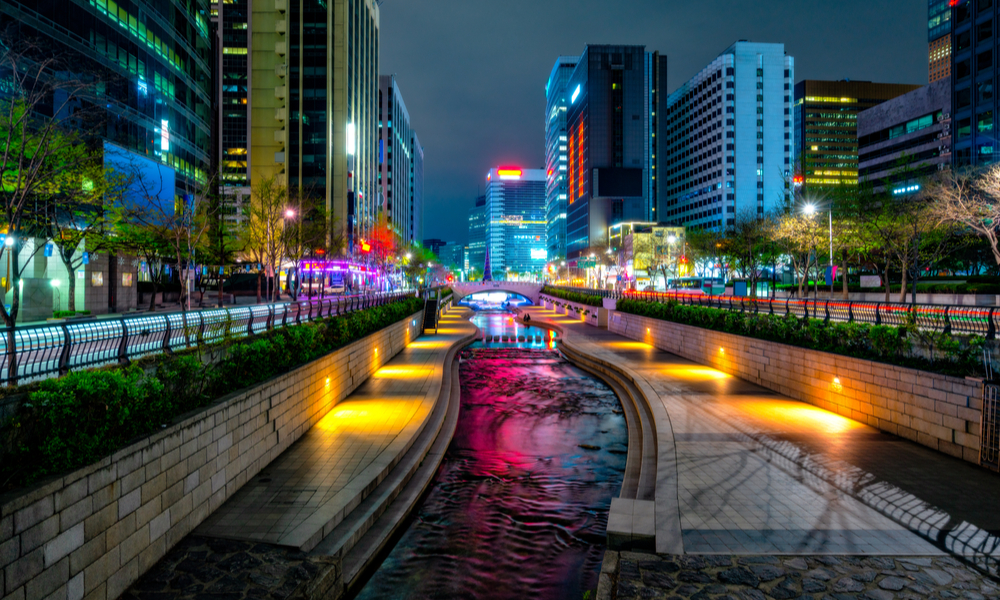
Akin to New York City’s High Line, Cheonggyecheon Stream is a renewed urban public space of a once overlooked (and blighted) part of the city. The waterway dates back to Seoul’s earliest days. It was used a channel for royal waste from Gyeongbokgung Palace in the 1400s and was the site of a massive shanty town after the Korean War. After the country’s economic boom of the 1970s, the stream was covered with concrete and an expressway ran over it. An initiative to revitalize the area in the early 2000s put it back at the forefront of Seoul and it’s now a popular spot for residents and tourists to stroll along with art featured on the pathways running alongside the water. It’s particularly enchanting in the evening when the colored light installations turn on.
Bongeunsa Temple
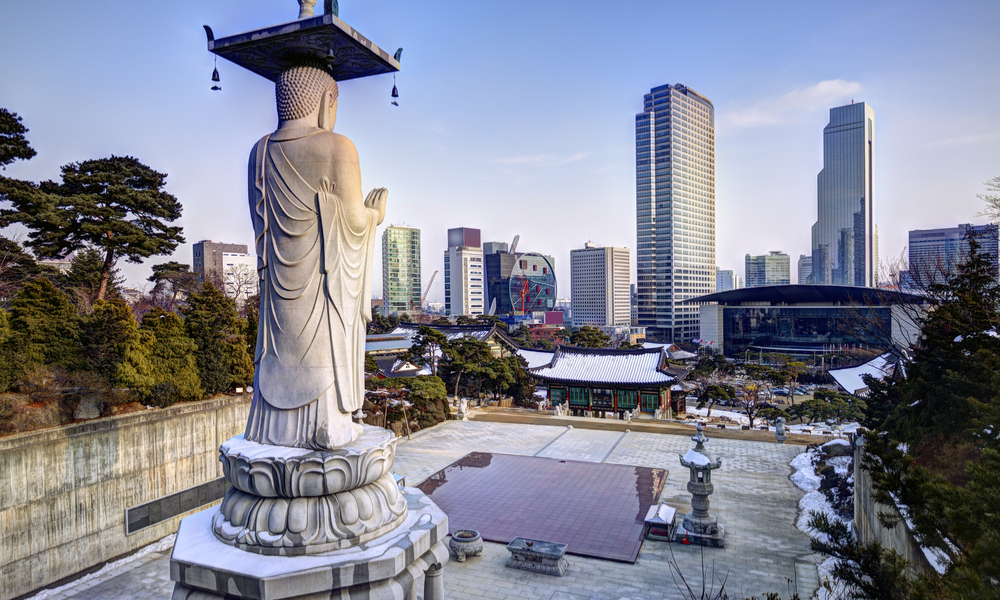
A Buddhist temple in the middle of the high rises and shopping malls of the Gangnam area in the southern part of the city may seem out of place, but — despite being destroyed and rebuilt over the centuries — there’s been one sitting on that very spot since the 8th century. Open year-round, Bongeunsa Temple can be a nice place to take a break from the area’s high-end shopping, as well as a nice spot that can add spiritual juxtaposition to your pictures.
Ihwa Mural Village
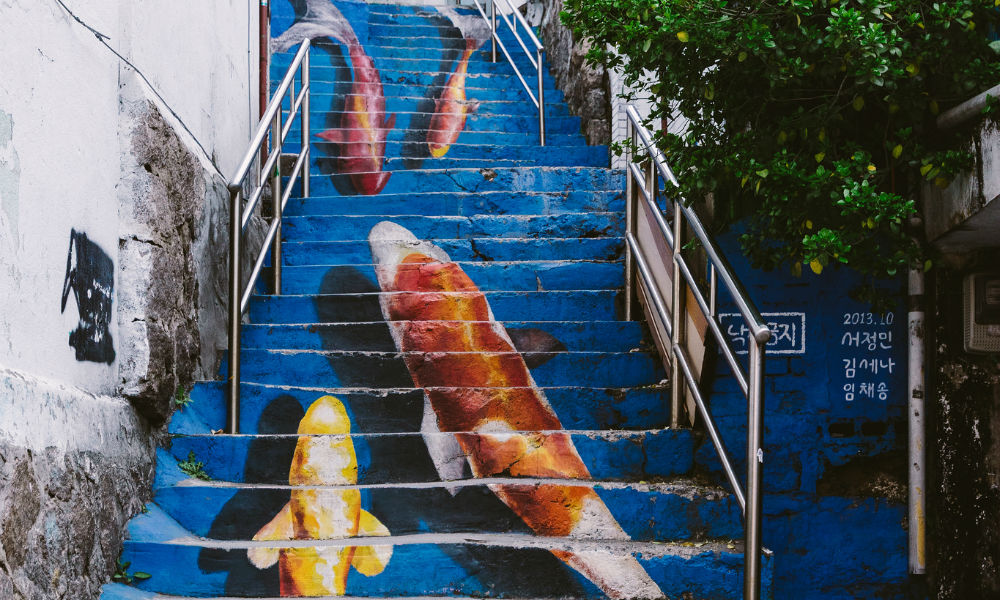
Image via Flickr – CC BY-SA 2.0 – Wei-Te Wong
It’s only been in recent years that street art murals have reached the societal stage where they’re recognized by most (particularly on social media) as being legitimate art, but they’re still pretty novel and rare. So a whole area of a city, like the neighborhood in the Ihwa-dong district known as the Ihwa Mural Village that’s dedicated to public murals and art installations, is really cool. Since 2006, the streets between the Hyehwa and Dongdaemun subway stations (right below Naksan Park) have been the site for a public art campaign funded by the Ministry of Culture, Sports and Tourism. The once declining area has now become a hot spot for visitors to explore and photograph. Remember: as some of the local residents aren’t too happy with the influx of foot traffic, it’s best to be respectful while on the lookout for cool art.
These aren’t the only spots in Seoul that are great for taking selfies. If you know of any others, leave them in the comments section below!

